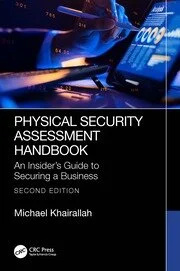Chief Executive Officers, accountability and hidden violations

Ben Sweet via Unsplash
Corporate governance demands transparency, ethical leadership and accountability from Chief Executive Officers (CEOs). However, numerous cases suggest that CEOs often wield significant influence over what is reported to their boards of directors, particularly when it comes to internal misconduct, regulatory violations, and criminal activity. This lack of transparency raises serious concerns about ethical and legal obligations, as well as the effectiveness of board oversight.
The hidden nature of CEO violations
According to the Association of Certified Fraud Examiners (ACFE) “Report to the Nations,” nearly a third of corporate fraud cases go unreported to the board of directors. This statistic underscores a troubling reality: executives often choose to conceal unethical behavior rather than disclose it. In many instances, this secrecy is intentional, as senior leadership selectively filters the information that reaches the board, thereby avoiding accountability.
Recent corporate scandals highlight this issue. Charter Communications, for instance, failed to disclose that one of its field technicians had a history of workplace violence. This omission became critically relevant when that technician murdered an 82-year-old woman in her home. Despite being convicted and sentenced to death in Texas, the courts ruled that Charter Communications bore responsibility for negligent hiring and supervision, resulting in a judgment exceeding $1 billion in compensatory and punitive damages. The fact that senior leadership deliberately withheld the employee’s violent history during the wrongful death lawsuit exemplifies the broader pattern of selective reporting.
Similarly, major corporations, including Boeing, have faced scrutiny for failing to disclose critical issues that affected safety and ethical conduct. Boeing’s reluctance to address ongoing internal challenges illustrates how executives, including the CEO, can evade accountability despite glaring performance failures.
CEO power and board compliance
CEOs wield immense power over their companies, often extending to the boardroom itself. Research indicates that many CEOs retain their positions even amid sustained poor performance. For example, Dave Calhoun remained CEO of Boeing for more than four years despite a series of public failures and declining performance. Similarly, Ginni Rometty led IBM through nearly a decade of revenue declines before stepping down, and Jeff Immelt presided over General Electric’s financial decline for 16 years before a multi-year corporate turnaround was required.
These cases are not anomalies; studies reveal that boards are often hesitant to dismiss underperforming CEOs, especially when those executives hold significant ownership stakes or have strong personal relationships with board members. This reluctance is exacerbated by the fact that CEOs frequently play a role in appointing directors, creating a conflict of interest that can undermine independent oversight.
CEO accountability and military-inspired governance
Stevo Pavićević and Thomas Keil, in their article “How Boards Can Increase CEO Accountability” (Harvard Business Review, February 4, 2025), argue that corporate governance can benefit from military leadership principles. Their research on 865 publicly traded United States manufacturing firms reveals that boards with directors who have military experience are more decisive in addressing CEO underperformance. These directors prioritize clear responsibilities, transparent performance evaluations and decisive intervention — three key principles that can significantly enhance CEO accountability in the corporate sector.
Clearly defined responsibilities
A key problem in corporate governance is the vague definition of CEO responsibilities. CEOs often take credit for successes while deflecting blame for failures onto external factors or subordinates. In contrast, military leadership assigns clear roles and expectations, ensuring that each leader is accountable for their domain.
Boards should adopt similar precision by creating CEO accountability documents outlining specific objectives, performance metrics and resource management expectations. These documents should also set review timelines, allowing for detailed evaluations that go beyond simple success or failure assessments. A structured approach to responsibility ensures that boards can effectively track CEO decisions and their impact.
Transparent performance evaluations
Corporate boards frequently shy away from honest discussions about CEO performance, fearing that such transparency could weaken the executive’s authority or morale. Instead, critical evaluations often occur informally in private conversations between directors. This lack of structured feedback leaves underperforming CEOs unaware of their standing and limits opportunities for corrective action.
In contrast, military organizations implement systematic and transparent performance evaluations, such as after-action reviews and annual assessments. These evaluations clarify expectations, promote accountability, and encourage continuous improvement. Corporate boards should establish measurable CEO performance goals at the beginning of each fiscal year and conduct regular quarterly reviews. By fostering a culture of accountability and openness, boards can ensure that CEOs address performance issues proactively rather than reactively.
Early and decisive intervention
Indecisive boards allow problems to fester, often exacerbating crises that could have been mitigated with early intervention. Military leadership principles emphasize the importance of identifying warning signs and acting swiftly. The “commander’s intent” model, which defines clear mission objectives, enables military leaders to adapt to changing conditions while staying focused on results.
Boards can adopt similar strategies by implementing a “no surprises” policy, requiring CEOs to disclose potential issues before they escalate. When early intervention fails, boards must be willing to take decisive action, including CEO dismissal if necessary. This approach not only prevents prolonged corporate decline but also benefits the CEO, as prolonged underperformance can irreparably damage their professional reputation.
The path to greater CEO accountability
Corporate governance must evolve to address the growing concerns surrounding CEO accountability. While companies operate differently from military organizations, adopting structured responsibility frameworks, transparent performance reviews, and decisive intervention strategies can significantly enhance board oversight.
Notably, Boeing’s recent decision to appoint Admiral Kirkland Donald as a special advisor to its Aerospace Safety Committee reflects the increasing recognition of military leadership principles in corporate governance. Boeing explicitly cited a commitment to transparency and accountability in its rationale for the appointment, illustrating the potential benefits of adopting structured oversight mechanisms.
Ultimately, corporate boards must resist the tendency to prioritize loyalty over accountability. CEOs should not have unchecked authority over what information reaches the board, particularly when ethical violations or legal infractions are at stake. By embracing clear governance structures and proactive oversight, boards can ensure that CEOs are held accountable — not only for financial performance but also for ethical leadership and corporate integrity.
Looking for a reprint of this article?
From high-res PDFs to custom plaques, order your copy today!









